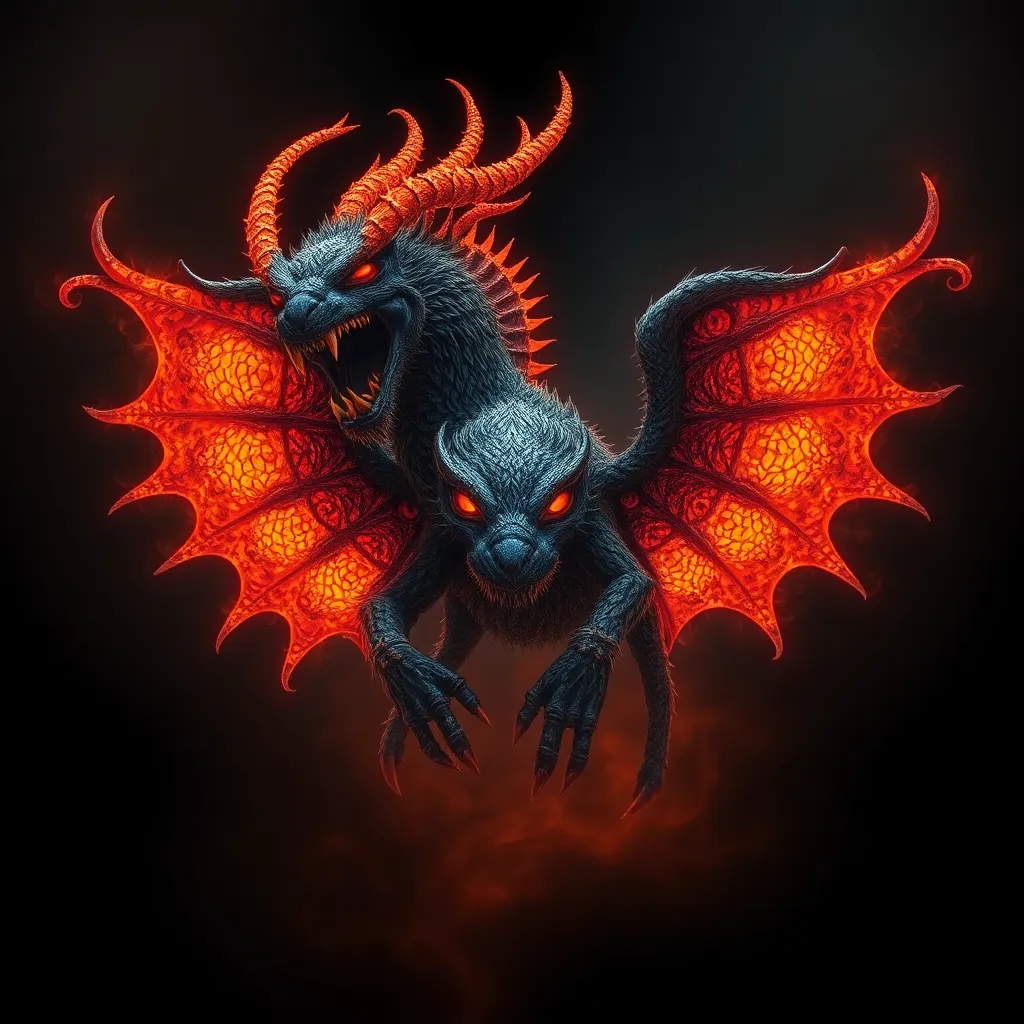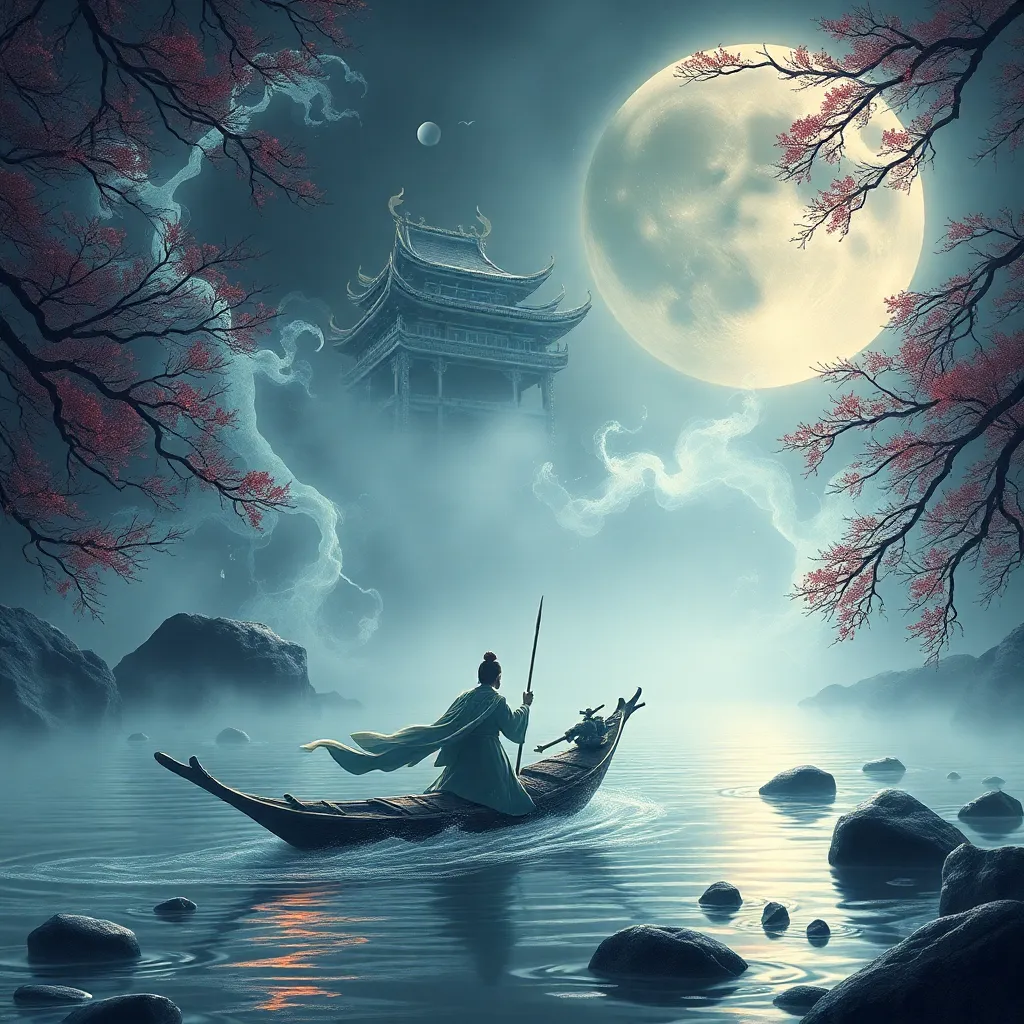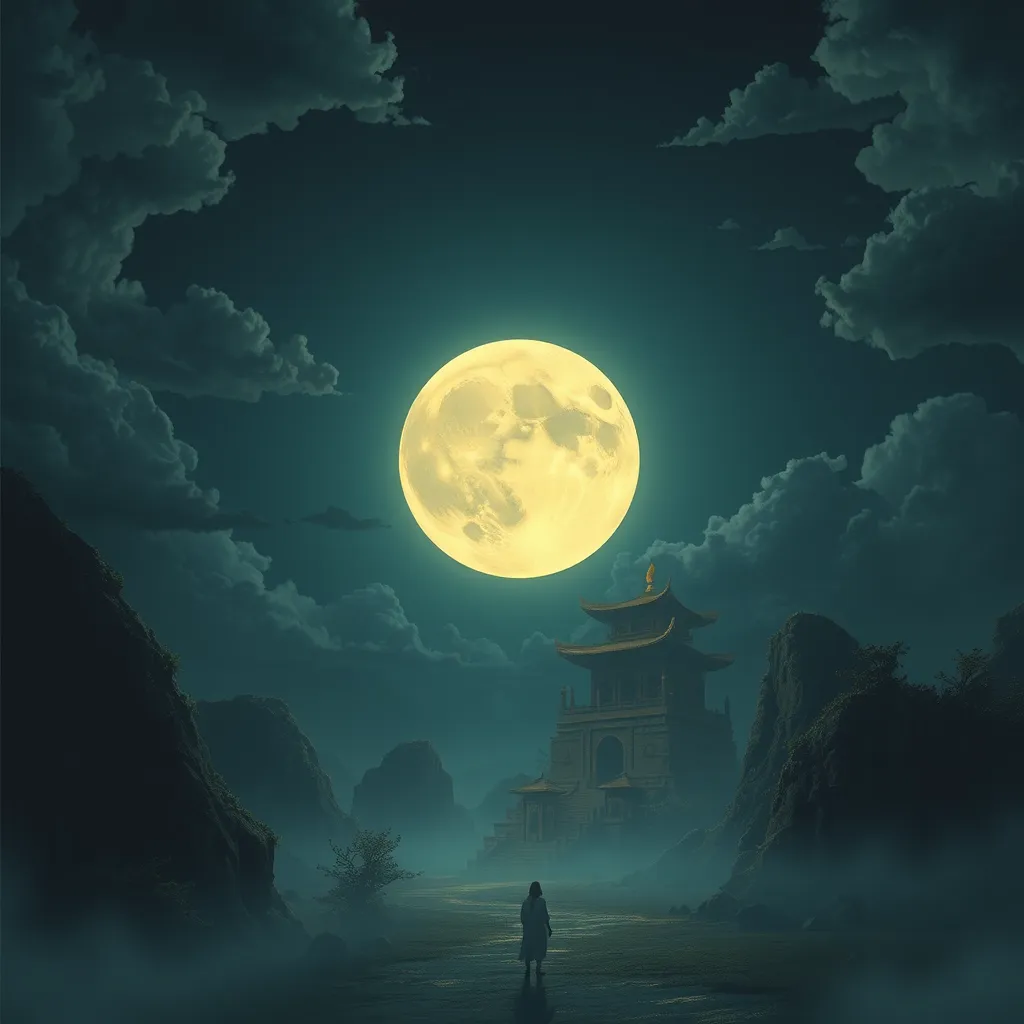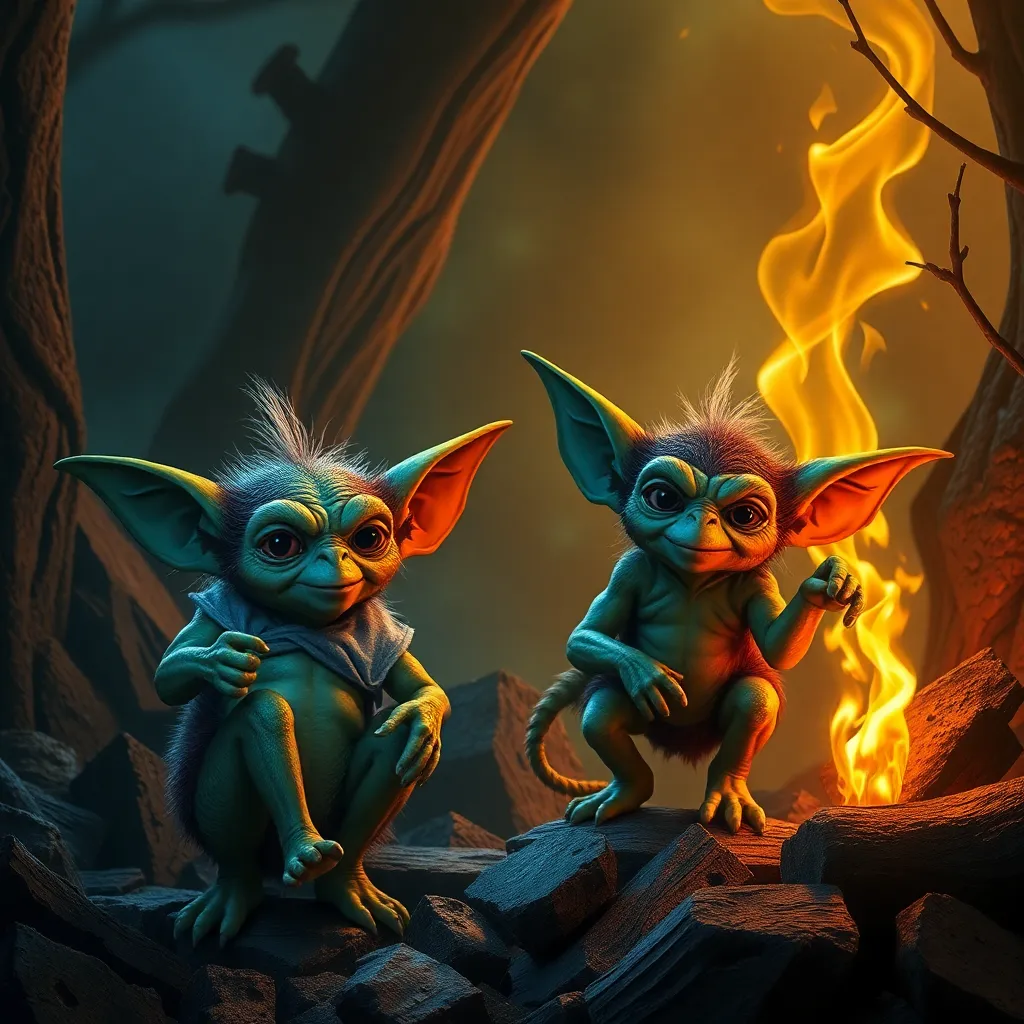The Manticore in Australian Aboriginal Mythology: A Creature of the Dreamtime?
I. Introduction
Australian Aboriginal mythology is a rich tapestry of stories, beliefs, and customs that have been passed down through generations. It encompasses a wide range of narratives that explain the origin of the land, the creation of life, and the interconnectedness of all beings. Among these narratives, we find fascinating creatures that symbolize various aspects of the natural world and human experience.
One such creature is the Manticore, a mythical beast originating from ancient Persian folklore, often depicted with the body of a lion, a human head, and a tail that can shoot poisonous spines. This article aims to explore the connections between the Manticore and Aboriginal Dreamtime stories, investigating whether this creature could be considered a part of the Dreamtime mythology.
II. Understanding the Manticore
A. Historical origins of the Manticore in various cultures
The Manticore’s roots can be traced back to Persian mythology, where it was known as the “mard khor,” meaning “man-eater.” It was later adopted into Western folklore, appearing in various literary works throughout the Middle Ages and the Renaissance. The fascination with this creature spread across Europe, leading to its incorporation into various mythologies and stories.
B. Physical description and characteristics
The Manticore is traditionally described as having:
- The body of a lion
- A human-like head, often with sharp teeth
- A scorpion-like tail that can launch deadly spines
This combination of features represents a hybrid creature, embodying both ferocity and cunning, which resonates with the themes of duality found in many cultures’ mythologies.
C. Symbolism and significance in folklore
In folklore, the Manticore symbolizes danger, the unknown, and the blending of human and animal instincts. It serves as a warning against the chaos that can arise from the intersection of civilization and the wild, representing the fears and challenges faced by humanity.
III. The Dreamtime: A Framework for Aboriginal Beliefs
A. Explanation of the Dreamtime concept in Aboriginal culture
The Dreamtime, or “Tjukurpa” in some Aboriginal languages, is a fundamental aspect of Aboriginal spirituality. It refers to the time of creation when ancestral beings shaped the land, established the laws of existence, and created the first humans. The Dreamtime is not only a historical period but also a continuous presence that influences the present and future.
B. Key themes and narratives associated with Dreamtime stories
Dreamtime stories encompass a variety of themes, including:
- The creation of landscapes and natural phenomena
- Morality and social order
- Interconnectedness of all living beings
These stories often feature a range of characters, including ancestral spirits, animals, and mythical beings that interact with the environment and each other.
C. The role of creatures and spirits within these narratives
Creatures and spirits in Dreamtime narratives often serve as teachers or guardians, imparting lessons about survival, respect for nature, and the importance of community. They embody the values and beliefs of Aboriginal culture, reinforcing the deep connection between the people and their land.
IV. Identifying Possible Links Between the Manticore and Aboriginal Mythology
A. Analysis of Manticore-like creatures in Aboriginal lore
While the Manticore itself does not appear in Aboriginal mythology, there are creatures with similar characteristics that can be found in various Dreamtime stories. For example:
- The Rainbow Serpent, a powerful being associated with water and fertility, is often depicted as a hybrid creature.
- Other mythological beings such as the Bunyip and Yowie display a blend of animal features, much like the Manticore.
B. Themes of hybrid beings in Australian myths
Hybrid beings are a common motif in Aboriginal mythology, symbolizing the blending of different aspects of life and nature. These beings often represent the duality of existence, echoing the Manticore’s symbolic attributes.
C. Similarities in symbolism and moral lessons
Both the Manticore and certain Aboriginal creatures serve as cautionary figures reflecting the complexities of human nature and societal values. They teach lessons about respect for nature, the consequences of hubris, and the importance of harmony within the community.
V. Cultural Exchange and Influence
A. Historical context of cultural interactions in Australia
Throughout history, Australia has been a crossroads of cultures, with Aboriginal peoples interacting with various groups, including early European settlers. These interactions have influenced the evolution of stories and mythologies, leading to a blending of traditions.
B. The impact of colonization on Aboriginal storytelling
The arrival of European colonizers brought significant changes to Aboriginal storytelling practices. Many traditional stories were suppressed or altered, leading to a loss of cultural heritage. However, some narratives evolved, incorporating new elements while retaining core Aboriginal beliefs.
C. Possible routes of the Manticore’s influence on or from Aboriginal culture
While it is challenging to establish direct connections between the Manticore and Aboriginal mythology, it is possible that the introduction of the Manticore concept through colonization influenced local storytelling. Alternatively, similar themes of hybrid beings may have independently developed within Aboriginal culture.
VI. Case Studies: Specific Stories and Characters
A. Examination of specific Dreamtime stories featuring similar creatures
Several Dreamtime stories feature creatures that share traits with the Manticore. For instance, the tale of the Rainbow Serpent illustrates a powerful being that embodies both beauty and danger, mirroring the duality of the Manticore.
B. Analysis of Aboriginal characters that share traits with the Manticore
Characters such as the Bunyip, which is often described as a fearsome water-dweller with various animalistic features, reflect similar themes of fear and power, akin to the Manticore’s portrayal in Western mythology.
C. Comparing narratives to highlight similarities and differences
When comparing narratives, we find that while the Manticore serves as a symbol of danger and chaos, Aboriginal stories often emphasize balance and respect for nature. The teachings derived from these comparisons can enrich our understanding of each culture’s relationship with the natural world.
VII. Modern Interpretations and Adaptations
A. How the Manticore has been reinterpreted in contemporary culture
In modern literature, art, and media, the Manticore has been reimagined in various ways, often emphasizing its mythical and fearsome qualities. This reinterpretation can sometimes diverge significantly from its original symbolism.
B. The role of art, literature, and media in shaping perceptions
Contemporary artists and writers have drawn upon the Manticore’s rich imagery to explore themes of identity, power, and the human condition. The blending of cultures in these works often highlights the enduring impact of mythological creatures.
C. Aboriginal perspectives on the Manticore and its significance today
For many Aboriginal artists and storytellers, the Manticore may not hold significant meaning, but the exploration of hybrid creatures can resonate with themes of cultural survival and adaptation. The reinterpretation of myths allows for a dialogue between past and present, highlighting the importance of storytelling in preserving cultural identity.
VIII. Conclusion
The exploration of the Manticore within the context of Australian Aboriginal mythology reveals intriguing parallels between different mythological landscapes. While the Manticore may not be a traditional creature of the Dreamtime, its attributes and themes resonate with the complexities found in Aboriginal stories. Understanding these connections enriches our appreciation of cultural narratives and the ways in which they evolve over time.
In conclusion, the Manticore, as a creature of myth, offers a lens through which we can examine the significance of hybrid beings in storytelling. The dialogue between the Manticore and Aboriginal mythology serves as a reminder of the importance of recognizing and respecting diverse cultural narratives in our interconnected world.



